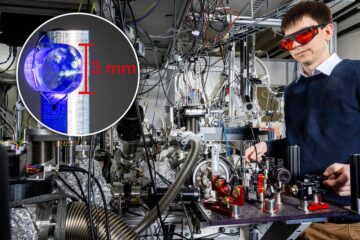Method for Determining the Frequency Response of an Electrooptical Component

<strong>Background</strong><br>
Currently frequency analysis of optical signals relies on electrooptical modulators generating variable frequency signals. Subsequently, the response of the component due to the signal is detected and analysed. Therefore, complex calibration of the system is necessary. Additionally, the frequency range is confined to that of the electrooptical modulator.<br><br> <strong>Technology</strong><br> This invention provides a method for determining the frequency response of an electrooptical component, particularly, of a light-generating or light-modulating component. Optical pulses with a pulse frequency are generated. The electrooptical component is controlled by an electrical measuring signal with a measuring frequency in such a manner that an optical output signal is formed that is modulated with the measuring frequency. The measuring frequency is equal to an integral multiple of the pulse frequency plus a predetermined frequency offset. The pulses and the output signal are mixed, and a mixed product is detected whose modulation frequency corresponds to the predetermined frequency offset. The mixed product indicates the frequency response of the electrooptical component at the measuring frequency.<br><br> <p><strong>Benefits</strong><br> <ul> <li>Frequency response of the system can be measured easily by autocorrelation</li> <li>No complex calibration of the measuring system is necessary</li> </ul> <p><strong>IP Rights</strong><br> German Patent DE 10346379<br> US Patent US 7 522 285 <br> <br> <strong>Origin</strong><br> Technische Universität Berlin, Germany</p>
Weitere Informationen: PDF
ipal GmbH
Tel.: +49 (0)30/2125-4820
Ansprechpartner
Dr. Dirk Dantz
Media Contact
Alle Nachrichten aus der Kategorie: Technologieangebote
Neueste Beiträge

Atomkern mit Laserlicht angeregt
Dieser lange erhoffte Durchbruch ermöglicht neuartige Atomuhren und öffnet die Tür zur Beantwortung fundamentaler Fragen der Physik. Forschenden ist ein herausragender Quantensprung gelungen – sprichwörtlich und ganz real: Nach jahrzehntelanger…

Wie das Immunsystem von harmlosen Partikeln lernt
Unsere Lunge ist täglich den unterschiedlichsten Partikeln ausgesetzt – ungefährlichen genauso wie krankmachenden. Mit jedem Erreger passt das Immunsystem seine Antwort an. Selbst harmlose Partikel tragen dazu bei, die Immunantwort…

Forschende nutzen ChatGPT für Choreographien mit Flugrobotern
Robotik und ChatGPT miteinander verbinden… Prof. Angela Schoellig von der Technischen Universität München (TUM) hat gezeigt, dass Large Language Models in der Robotik sicher eingesetzt werden können. ChatGPT entwickelt Choreographien…

















